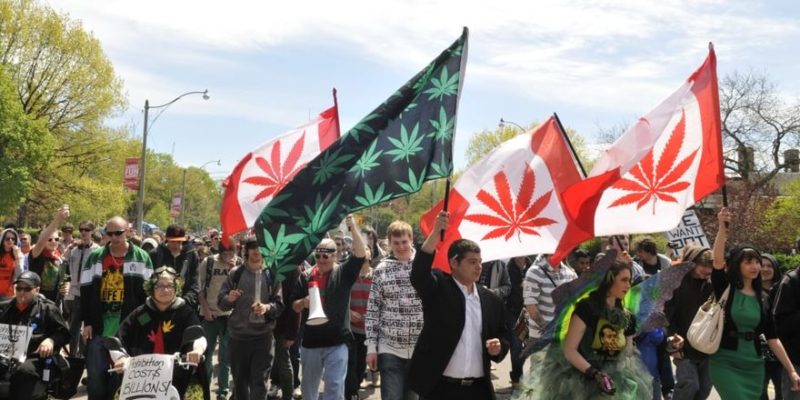We explain what drugs are, how they are classified, and the effects they produce. Also, what are its characteristics and consequences?
What are drugs?
The term drugs is used generically for all those substances that have the potential to cause changes when introduced into the body . For example, medicines and drugs are drugs. Illegal drugs, narcotics or narcotics are those substances for recreational use capable of creating addiction and inducing altered states of consciousness.
This last type of substance has been consumed by humanity since ancient times , having a ritual or social use. In modern societies they have proliferated mainly in laboratory versions with much more intense and dangerous chemical properties.
As a consequence, by the middle of the 20th century they were mostly declared illegal . The exceptions to this prohibition were alcohol and tobacco, with which the West has been more tolerant. However, in the religions of the Middle East , alcohol is totally prohibited.
As a result of its illegalization, certain countries such as Mexico and the United States declared the “war on drugs” . It consists of a series of national and international operations to combat drug trafficking. Unfortunately, despite (or because of) their illegality, drugs are among the most lucrative businesses in the world.
The prohibition is based on the fact that the presence of these illicit substances in societies generate individual and social harm . Among other things, they affect the crime rate and public health. In some cases, however, there is talk of legalizing them in order to better control them, transferring their administration to regulated institutions.
Various origins of drugs

Some drugs come from plants , fungi , and animals .
Human beings have had access to them since early times , such as marijuana or hallucinogenic mushrooms.
Other drugs, on the other hand, more modern, have a synthetic origin , the product of chemical reactions in laboratories.
The design of these drugs aims, in many cases, to make them more violent and addictive . Such is the case with heroin or ecstasy.
Types of drugs
There are different ways of classifying drugs. In the first place, they can be divided according to their origin, natural or synthetic, as we saw earlier. They can also be distinguished by their level of social acceptance:
- Legal drugs. They are subject to controls and moderation. For example, tobacco and alcohol.
- Illegal drugs. They are strictly prohibited and their consumption, sale and distribution is punishable by law . For example, cocaine and heroin.
- smokable. Those that release intoxicating fumes when burned, which are then inhaled through the mouth, such as tobacco, marijuana or crack.
- Drinkable. Those that can be ingested orally, either in the form of pills, liquids or ballots attached to the tongue. Such is the case of alcohol, ecstasy or LSD.
- Injectables. Those that must be introduced directly into the bloodstream , using a syringe for it, such as heroin or morphine.
- Inhalables. Those that are consumed through the nose: they either naturally generate gases or vapors that can be breathed in directly, as is the case with certain types of glue, or in the form of powder that can be inhaled dry, such as cocaine.
Drug effects
Drugs have different effects on the human body and especially on consciousness. Based on this distinction, we can classify them into:
- Nervous system depressants . Those that decrease the functionality of thought and sensations. Such as opiates (opium, morphine, heroin), alcohols (whiskey, rum, wine, gin) or sedatives (sleeping pills, tranquilizers).
- Nervous system stimulants. Those that have the opposite effect to the previous one, that is, they excite thought and sensations. They are classified into minor stimulants ( coffee , tea, cocoa, nicotine) and major stimulants (cocaine, amphetamines).
- Psychedelic or hallucinogenic. Those that alter perception or thought, inducing altered states of consciousness, causing pleasure and other artificial sensations. Such as LSD, mescaline, ecstasy, hashish.
Consequences of its use
 Drugs have the direct consequence of altering people's habitual behavior . The magnitude of this change depends on the degree of intoxication, the development of the individual's organism and the type of substance.
Drugs have the direct consequence of altering people's habitual behavior . The magnitude of this change depends on the degree of intoxication, the development of the individual's organism and the type of substance.For example, limited alcohol consumption in adults may only cause relaxation. While in children or adolescents it can severely affect the development of the nervous system .
Other substances, such as heroin, cut the connection with the real world and unleash pleasurable but artificial sensations . This is one of the causes of addiction: they offer an escape from the real world that can only be sustained through new use.
The problem with "hard" or illegal drugs is that they generate a great dependency burden on the individual who uses them. In part this is due to psychological or emotional characteristics. But mainly it is due to uncontrollable brain chemical reactions for the individual.
As soon as the substance is no longer present in the individual, an unpleasant sensation known as “withdrawal syndrome” is generated. To avoid this, subjects can subject themselves or others to any kind of harm or humiliation, since they have become slaves to the substance.
Impoverishment, criminal activities, prostitution, and family violence are possible consequences of the drug.
Drug addiction
We speak of drug addiction when an individual has become addicted to one or more psychotropic substances, whether legal (such as certain drugs) or not. His entire life is based on guaranteeing consumption: he is able to stop eating, stop working, stop taking care of his loved ones, just to be able to continue consuming.Drug addiction is currently treated as a disease both clinically and socially . It requires assistance and special care, very similar to alcoholism . There are Narcotics Anonymous (NA) groups for this and other forms of support to prevent repeated use.
Once they appear, addictions imply a permanent danger for the individual who suffers from them . Even those people who successfully go through treatment and completely eliminate their use continue to suffer from addiction. That is why those who have had it should avoid any consumption of the substance, no matter how minimal.
Drug tolerance
 One of the problems of drug addiction is that as the individual consumes the substance, they become resistant to its effects . This phenomenon is called “tolerance”. Thus, the more drug you consume, the less effect it has on you.
One of the problems of drug addiction is that as the individual consumes the substance, they become resistant to its effects . This phenomenon is called “tolerance”. Thus, the more drug you consume, the less effect it has on you.As a consequence, it increases the doses to obtain the desired effect . This generates a vicious circle that usually ends in overdose, that is, in the consumption of much more drug than the body can tolerate, causing coma, permanent damage to the body or even death.
Abstinence syndrome
The withdrawal syndrome is a set of unpleasant, painful and distressing sensations that affect the addict when the levels of the substance to which he is dependent decrease in his system.The sensation is so painful that most addicts will do anything to avoid it and guarantee their next fix. This makes addiction a form of slavery .
Detoxification
 Breaking the vicious cycle of drugs and addiction often requires a period of recovery . To do this, the addict remains isolated from all kinds of harmful influences in his life, including, of course, the substance to which he became dependent.
Breaking the vicious cycle of drugs and addiction often requires a period of recovery . To do this, the addict remains isolated from all kinds of harmful influences in his life, including, of course, the substance to which he became dependent.This period involves many physical sufferings . When these decrease, it is recommended to resort to psychotherapy to understand the reasons that pushed consumption in the first place.
legality vs. illegality
 The dilemma of the legality or illegality of drugs arises due to two opposing positions regarding how to remedy their problem:
The dilemma of the legality or illegality of drugs arises due to two opposing positions regarding how to remedy their problem:
- Keep the ban. This position is based on the fact that these are dangerous substances and therefore must be prohibited. As a consequence, their consumers , sellers and distributors must be treated as criminals (or as sick in the case of the consumer). This is the traditional opinion.
- Legalization. The view that drugs, dangerous as they are, should be legal, points to the possibility of state control . In this way, the illegal market that operates clandestinely, without obeying rules of any kind, or health, or responsibility, etc., would be eliminated.
The war on drugs
Decades have passed since the declaration of the «war on drugs», without significant progress at the global level . On the contrary, many accuse the program and the US DEA of taking over the illicit narcotics market .Worldwide sales of these banned substances amount to millions of dollars per month . There are many interests in the drug world and, above all, many victims, so it is a difficult issue to resolve.
The above content published at Collaborative Research Group is for informational and educational purposes only and has been developed by referring to reliable sources and recommendations from technology experts. We do not have any contact with official entities nor do we intend to replace the information that they emit.
Luke is passionate about fostering student involvement and connection. He studied psychology for his major and likes learning about the past. Luke aims to specialize in artificial intelligence and cybersecurity. .
Leave a reply
Your email address will not be published. Required fields are marked *Recent post

Sport: What Is It, Types, Risks, Features, Characteristics and Examples

Dogs: Emergence, Features, Characteristics, Feeding and Breeds

Story: Definition, Elements, Structure, Features and Characteristics

